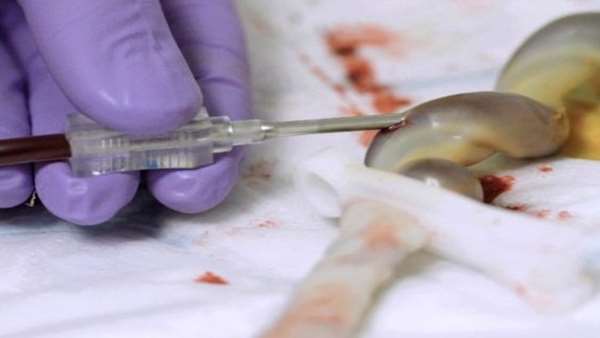Stem Cells Might Provide Breakthrough In Treating Severe Blistering Disease, RDEB
the team details how they used a certain type of stem cells to significantly relieve the symptoms of recessive dystrophic epidermolysis bullosa (RDEB) in mice.
the team details how they used a certain type of stem cells to significantly relieve the symptoms of recessive dystrophic epidermolysis bullosa (RDEB) in mice.
RDEB is an inherited disease caused by mutations in the COL7A1 gene, essential to producing type VII collagen. Signs and symptoms vary widely, according to the National Institutes of Health. In mild cases, blistering may primarily affect the hands, feet, knees and elbows. Severe cases, though, often involve widespread external and internal blistering, which can result in vision loss, scarring, disfigurement and, often, squamous cell carcinoma and death during the patient’s third or fourth decade of life.
There is no cure and treatment is limited to preventing blisters from forming and to managing symptoms. A therapy that is safe for patients and alleviates both the outside and inside manifestations of the disease is in great demand.
In the study published in SCTM, a multi-institutional team demonstrated significant therapeutic benefits of human placental derived stem cells in a mouse model with RDEB. The investigation was led by Mitchell Cairo, M.D., chief of Pediatric Hematology, Oncology and Stem Cell Transplantation and professor of Pediatrics, Medicine, Pathology, Microbiology & Immunology and Cell Biology & Anatomy, at New York Medical College, Valhalla, N.Y.
“We had recently shown how human cord blood-derived stem cells promote wound healing and ameliorate the blistering in a RDEB mouse model,” Dr. Cairo said. “In this latest study, we found that the therapeutic effects of a different type of stem cell — human placental derived stem cells (HPDSCs) — were even more remarkable. HPDSCs contain a much higher level of both hematopoietic and non-hematopoietic stem and progenitor cells than cord blood and are low in T cell content. HPDSCs are currently being used to safely treat humans with malignant and non-malignant diseases [NCT 01586455].”
A single dose of these HPDSCs investigated in combination with unrelated cord blood given to one group of mice extended their median life from two to seven days; an additional administration given to a second group significantly extended the median life span to 18 days.
"We further demonstrated that the HPDSCs effectively migrated to the organs affected by RDEB (i.e., skin and GI tract), deposited the missing protein (C7) and significantly improved the adherence of epidermis to the dermis of the skin without inducing anti-C7 antibodies,” Dr. Cairo added. "Based on these results, we believe this study warrants future clinical investigation to determine the safety and efficacy of HPDSCs in patients with severe RDEB.”
“This research into using human placental derived stem cells as HLA-independent donor cells in patients with RDEB suggests potential for a much-needed therapy,” said Anthony Atala, M.D., Editor-in-Chief of STEM CELLS Translational Medicine and director of the Wake Forest Institute for Regenerative Medicine. “We look forward to seeing the progression of this work toward clinical trials.”





ارسال به دوستان